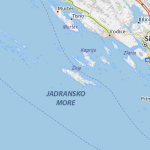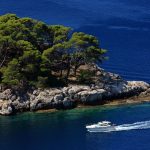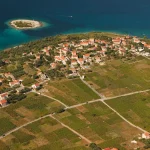Croatian islands, most would agree, are a true paradise on Earth.
So far, you’ve most definitely heard of Hvar, Brač and Korčula island, and if you’ve been following our website, islands of Krk, Cres, Mljet and Vis also ring a bell. Recently, we’ve come up with a series of articles aiming to introduce other less popular, but not less wonderful islands such as Silba and Rab. However, today we’ll let you in on some of the most interesting and unique-looking islands and islets in the Croatian part of the Adriatic Sea.
1. Galešnjak Island or Love Island
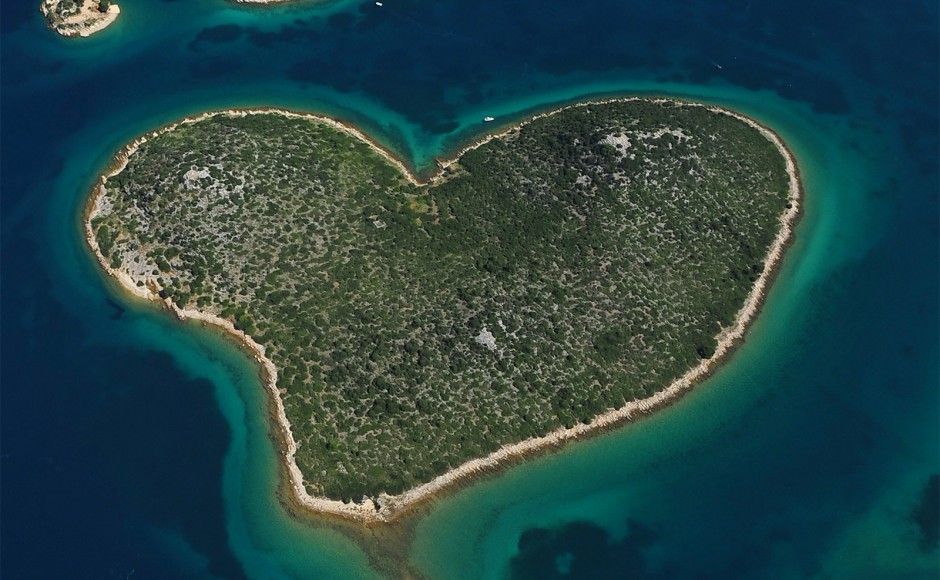
Photo: TB Zadar Region
Let’s start with an island that has already gained some popularity and recognition. The island has recently been included in the list of most beautiful European landscapes published by renowned travel website European Best Destinations. Known as “Love Island”, “Lover’s Island” or simply “Heart-shaped Island”, the island of Galešnjak has won hearts of many tourists, travellers, nature-lovers and travel magazines alike. This lovely island that is shaped like a heart is a true wonder of nature. Galešnjak island is located in the Pašman channel, between the islands of Pašman and the mainland town of Turanj, a few kilometres from Zadar. This small island was first recorded by Napolean’s cartographer in the early 19th century. It is uninhabited, privately-owned island, where only wild plant and trees grow. The island owes much of its popularity today thanks to Google Earth, which highlighted the island back in February of 2009.
2. Gaz Island or Fish Island
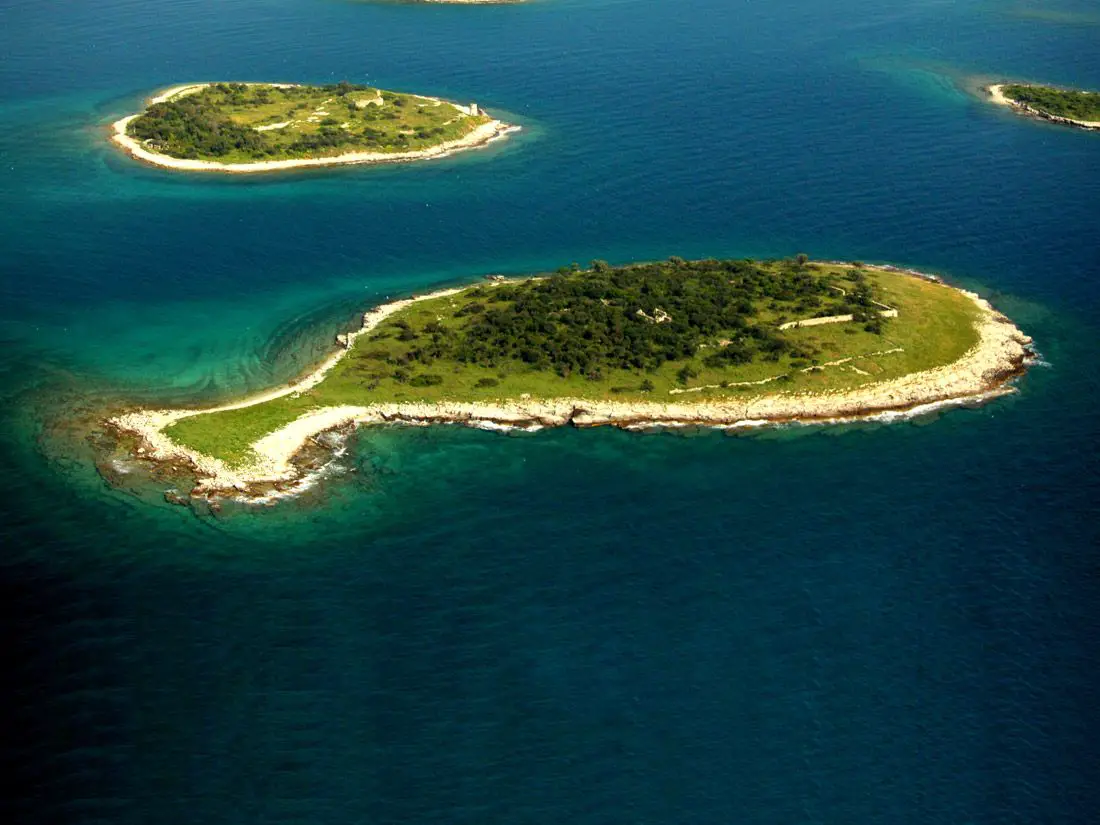
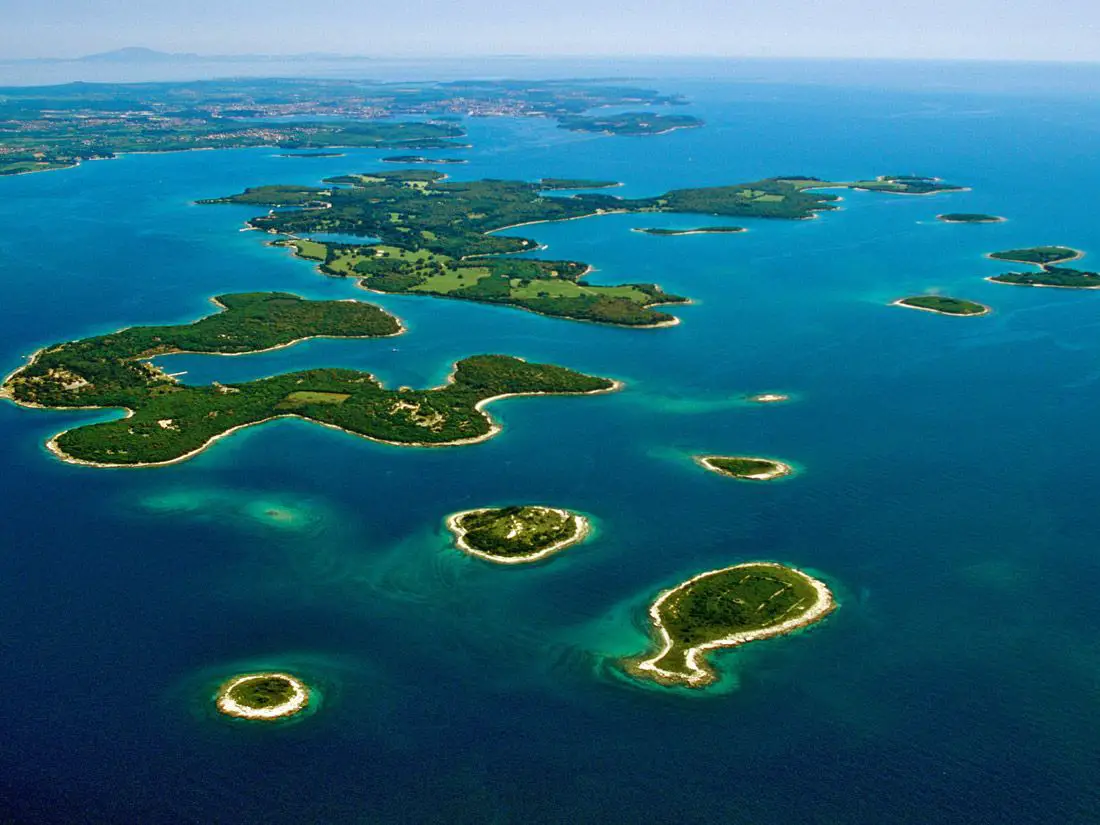
Photos: NP Brijuni
Another Croatian island with an interesting shape is the island of Gaz (or Gaž) located in the Brijuni archipelago, three miles NW from Pula. Shaped like a small fish, this island is one of 12 tiny islets (and 2 larger islands) that are part of the Brijuni National Park. As the Galešnjak island, the island of Gaz is very small and uninhabited. (Want to know more about sailing the Brijuni Islands? Click here.)
3. Baljenac Island or Fingerprint Island
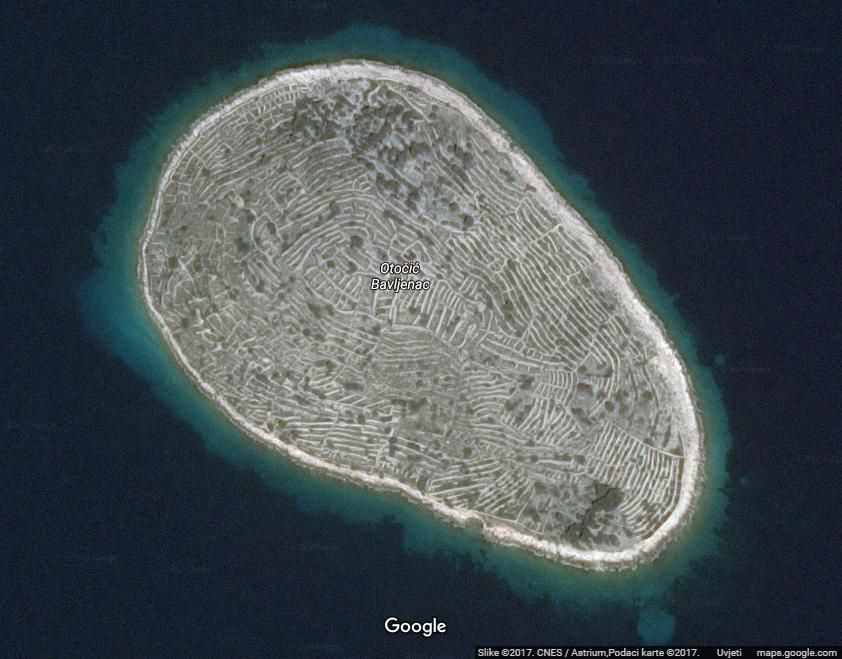
Photo: Google Earth
This impressive little island located in the Šibenik archipelago, near Kaprije island, is not so much a natural wonder as it is a man-made work of art. The small island of Baljenac thanks to its intricate labyrinths of hand-built dry stone walls (suhozid) is strikingly reminiscent of a giant fingerprint. The total length of the dry stone wall system numbers 23 kilometres, which is all the more impressive when we take into the account that the island has the surface area of no more than 0.14 km2! Constructed for agricultural purposes (mostly to cultivate grapevines and fruits), these dry-wall structures were built completely by hand, using no tools or machinery. Recently, an initiative to inscribe Baljenac island in the UNESCO World Heritage has been announced. Maybe one day this fascinating ‘Fingerprint island’ may become a symbol of Croatian traditional dry stone walling. Check out this amazing aerial footage of the island.
4. Ljuljevac Island – St. Nicholas Fortress

Photo: TB Šibenik
Not all of the unique islands on this list are the oddly-shaped ones. Some have an interesting history such as the small island of Ljuljevac in Šibenik archipelago. The island is interesting for housing a naval fort called St. Nicholas Fortress, which is part of the Venetian defence works made in the 16th century. It was built at the entrance to the canal of St. Ante near Šibenik to protect and prevent Turkish boats from reaching the port of Šibenik. The imposing appearance and size of the fortress, made from brick with foundations made of stone, and armed with cannons, presented a threat to the incoming enemy ships. St. Nicholas Fortress is also one of the most recent UNESCO World Heritage Sites in Croatia, inscribed in July 2017 for being one of the best-preserved examples of Venetian defence architecture in Dalmatia.
5. The Isle of St. Mary or An Island Within An Island
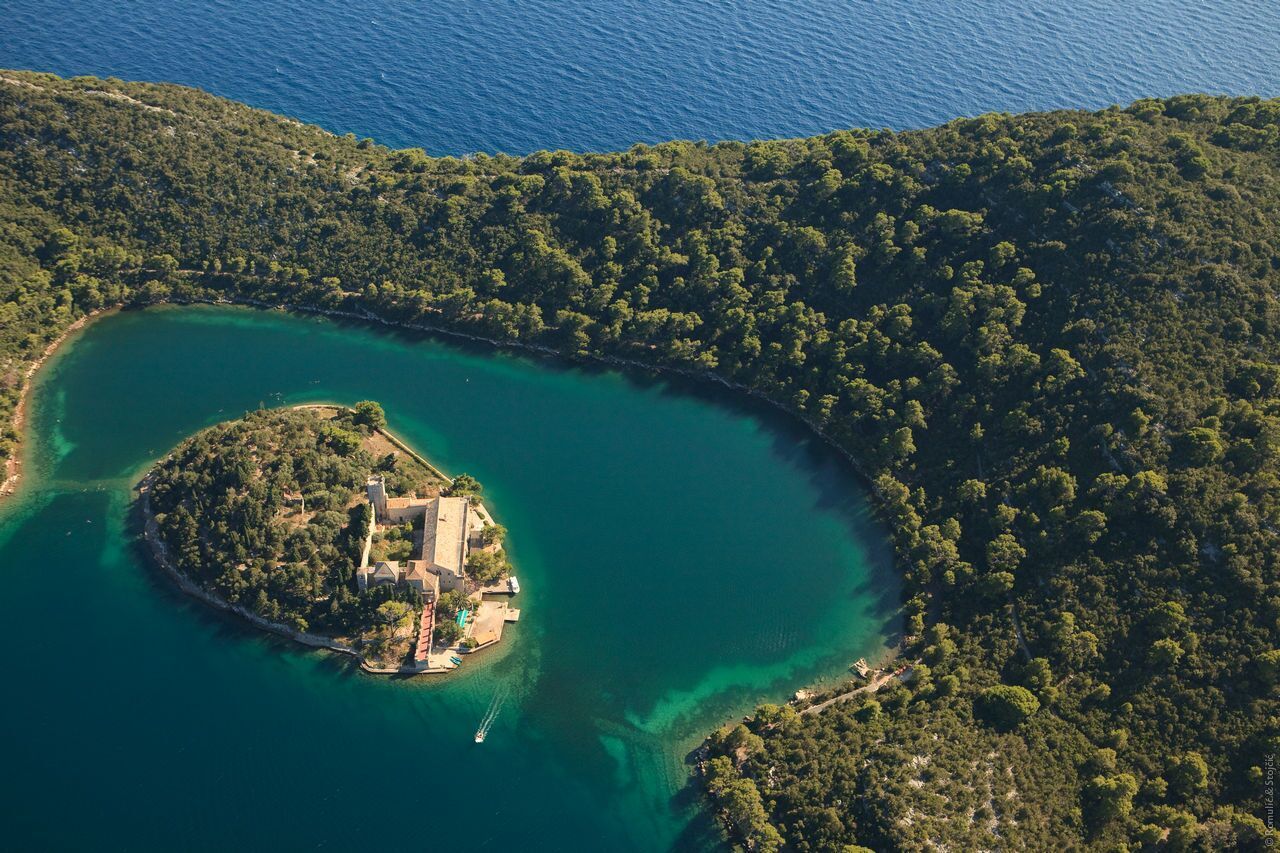
Photo: Romulić & Stojčić
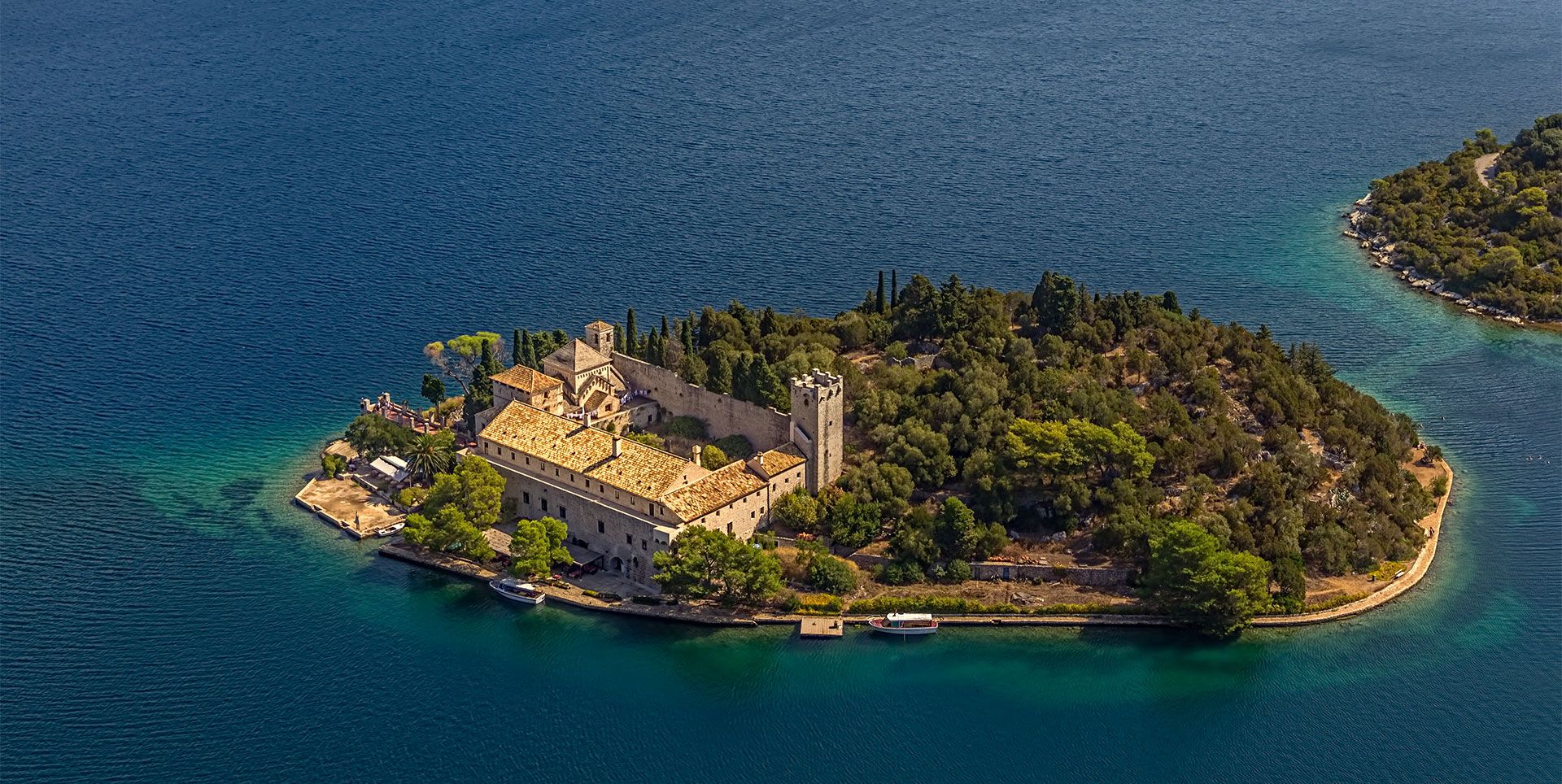
Photo: NP Mljet
The island of Mljet is unique as it is, being the most verdant island in the Adriatic. The most visited part of Mljet is the Mljet National Park, the first and oldest national park in the Adriatic. The park covers almost a third of the island and includes two deep bays filled with seawater known as Malo Jezero and Veliko Jezero (Small Lake and Great Lake). These unique saltwater lakes represent a unique natural phenomenon. Originally, around 10 thousand years ago, the lakes contained freshwater. The island of St. Mary is located in the southern part of the Great Lake on Mljet Island, which makes it an island within an island. With a surface area of just 1.2 acres (0.5 hectares), this small islet is most famous for the Benedictine monastery which dates back from the 12th century. The Isle of St. Mary is quite popular among the locals and is even considered a symbol of Mljet island and Mljet National Park. To find out more about the islet, and the national park, click here.


